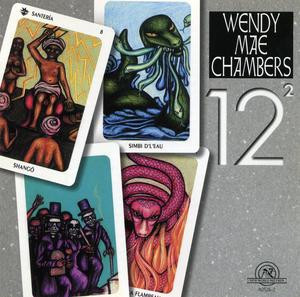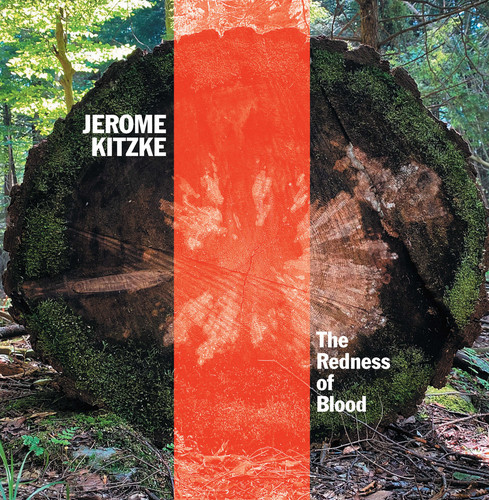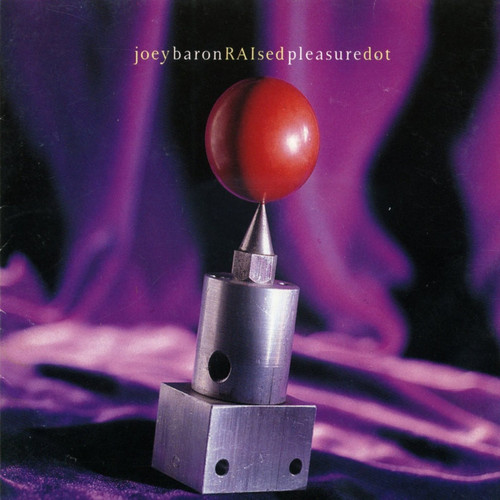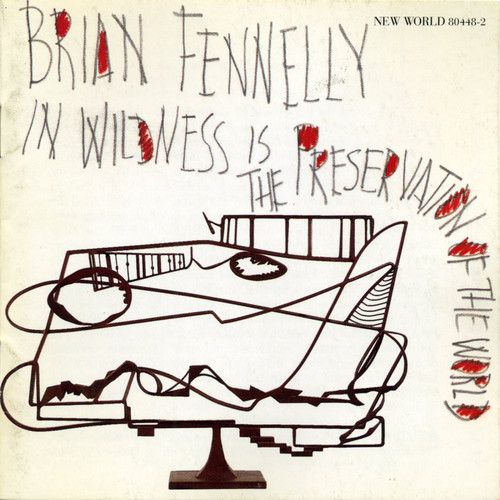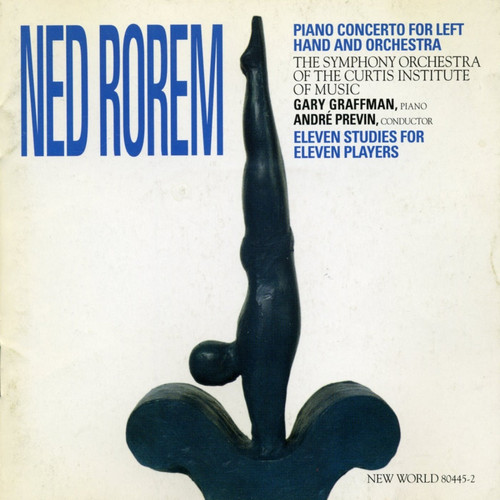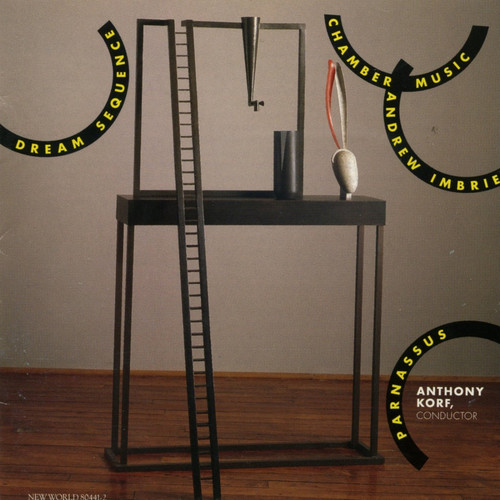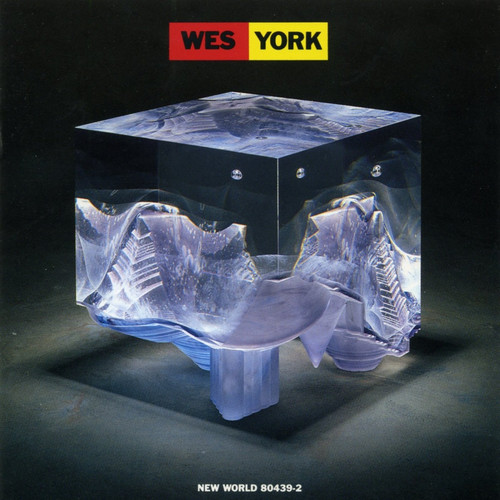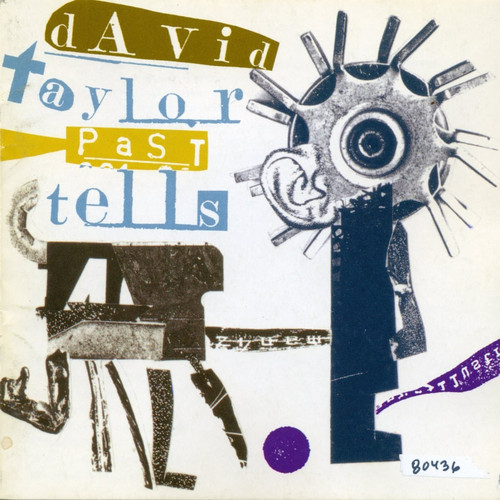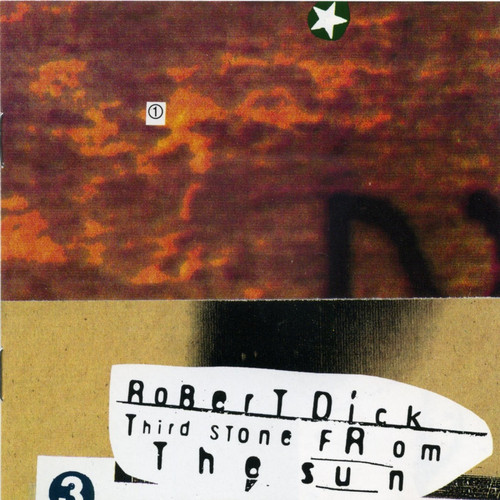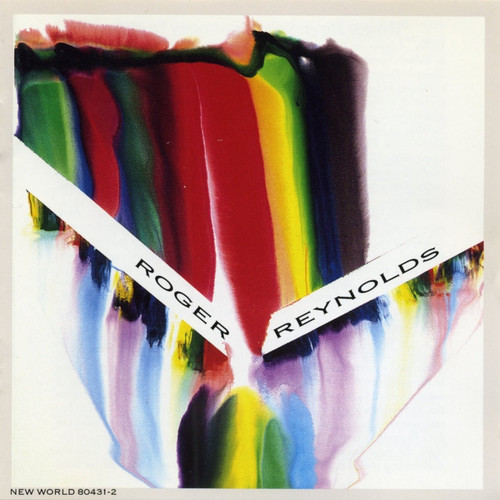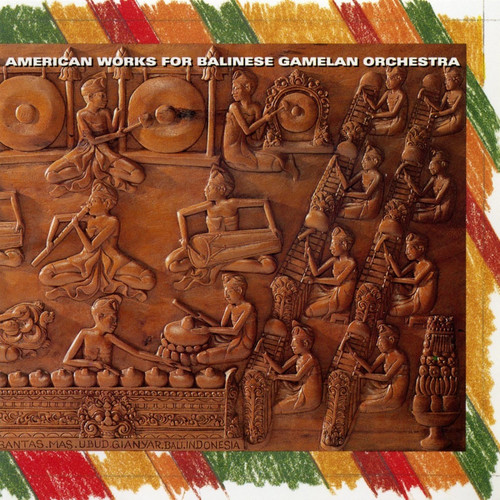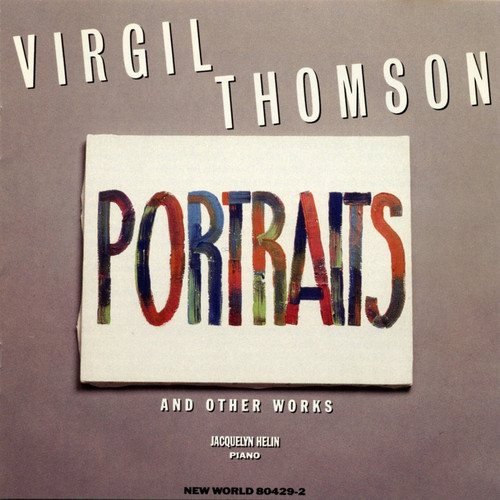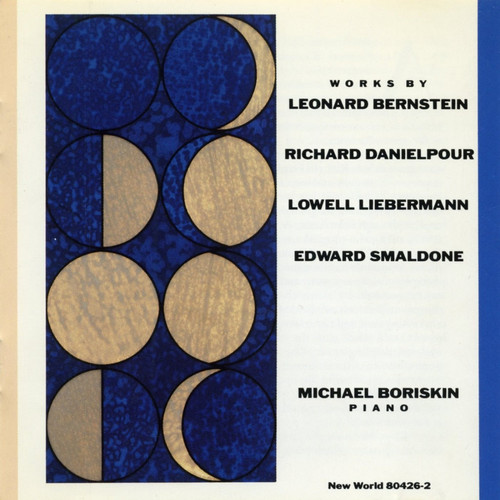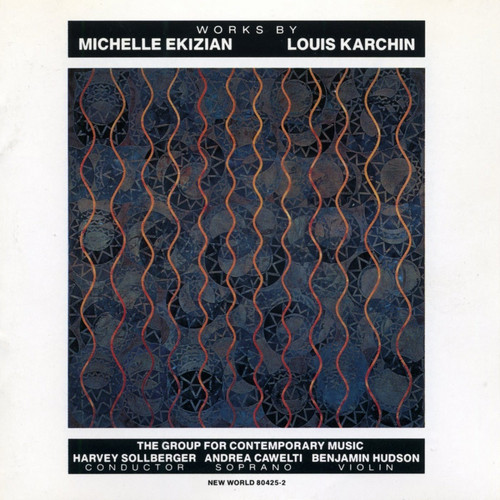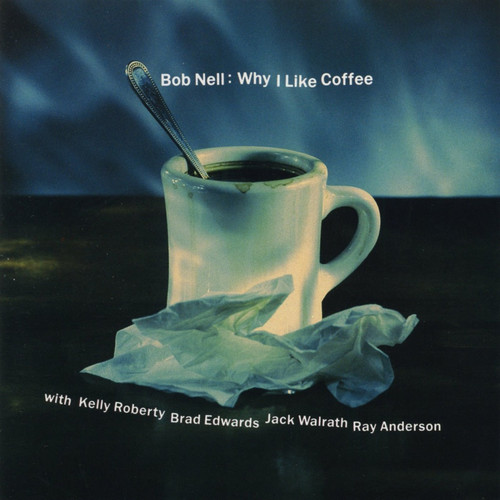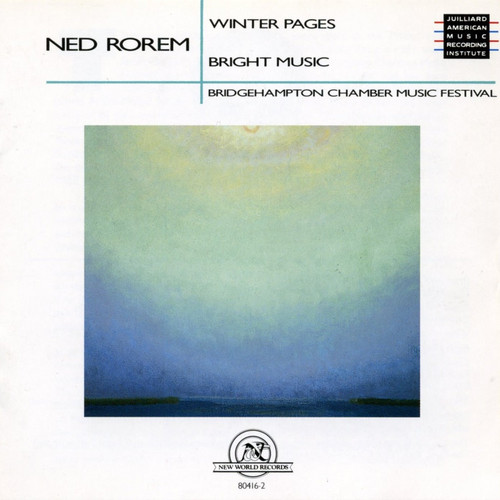★New World Records
12²
1998 release ** "Wendy Mae Chambers (b 1953) is known for the scope and originality of her works, typified by large and unusual instrumental combinations. In Chambers’s own words, Twelve² is a voodoo tone poem in eleven movements for twelve percussionists. Each movement is about 4 minutes in length. The last movement is 4'33" of lots of sound (in tribute to John Cage's 4'33" of silence). Voodoo drumming [calls] forth Cage’s spirit and the bells, chimes, and gongs [celebrate] ... celestial qualit…
The Redness of Blood
Jerome Kitzke (b. 1955) has described himself as being as much a storyteller as a composer, and that description makes sense. Throughout his music there is a strong dramatic, narrative, theatrical component. Performers shout, sing, move and dance, often as though possessed by the music. An obvious ancestor here is Harry Partch, and though Kitzke’s music does not use just intonation, it projects that “corporeal“ quality that this predecessor valued as essential.The pieces on this disc make for in…
Raised Pleasure Dot
Drummer Joey Baron has played with such unorthodox types as John Zorn, Wayne Horvitz, and Tim Berne, so it's not surprising that his own sessions are equally diverse and ambitious. This date presents an unusual instrumental lineup and a freewheeling, constantly changing musical menu. Baron heads a trio with saxophone and trombone; the absence of bass, keyboards, or guitar results in intriguing voicings and the pieces are solely dependent on the interaction of his drumming with Ellery Eskelin’s s…
In Wildness Is The Preservation Of The World
The music on this recording is drawn from a range of solo, chamber, and orchestral works composed by Brian Fennelly (b 1937) over a period of two decades. In his thirty-year career, Fennelly has contributed more than sixty works to the repertoire of twentieth-century music. His most significant teachers were Mel Powell, Donald Martino, Gunther Schuller, George Perle, and Allen Forte.
The works presented here make use of a variety of harmonic systems: the complex and sophisticated serialism of In…
Piano Concerto for Left Hand and Orchestra
Gary Graffman and I have been staunch friends since we met as students at the Curtis Institute in 1943. The notion of pooling our talents, however, arose only when we returned to that Institute nearly five decades later, Gary as director, I on the faculty. Now Gary, who has not made professional use of his right hand since 1980, felt an urge to expand the admirable but restricted literature of left-hand works (most of them composed long ago for the elder brother of philosopher Ludwig Wittgenstei…
Dream Sequence (Chamber Music)
Andrew Imbrie (b 1921) is a composer whose independence and singularity of purpose have endowed a prodigious output that awaits wider discovery. His method of composing is not in and of itself remarkable. He is, rather, of a tradition wherein achievement is measured in terms of individuality, depth of expression, and craft.
His music reveals a preoccupation with line, which in turn generates form, harmony and color. Line also motivates the forward motion and energy that characterizes so much of…
Over The Edge
Eric Chasalow (b 1955), who grew to aesthetic maturity as Postmodernism was evolving, points (not at all surprisingly) to jazz as part of the family tree. In 1983, Chasalow created a set of three works for soloist and electronic sounds. The composer fashioned each, for cello, for soprano, and for flute, with particular accomplished performers in mind, taking his inspiration, he says, "from their personal styles and energy."
Chasalow composed Hanging in the Balance (1983) for the redoubtable cell…
Wes York
In a robustly maximalist age that gladly permits the fusion of unrelated styles and the flaunting of eclecticism, Wes York's (b 1949) music stands out as reductive, elliptical, elusive, implying diversity rather than spelling it out. It is a music that is unusual in its reconciliation of what had previously seemed two incompatible forms of Minimalism: the propulsive, harmony-and-rhythm driven sort pioneered by Philip Glass and Steve Reich, and the more mysterious and intangible ways of Morton F…
Past Tells
This is not a recording for the fainthearted, the straitlaced, or the stylistically correct. Bass trombonist David Taylor has assembled a multi-faceted self-portrait out of pieces he selected, inspired, and composed. His eclecticism demonstrates how meaningless the old stylistic boundaries are for a contemporary artist. Taylor is known for his work with such artists as Duke Ellington, Barbra Streisand, Frank Sinatra, Aretha Franklin, The Rolling Stones, and Quincy Jones. He also premiered compos…
Third Stone From The Sun
It is a monumental task to interpret the music of Jimi Hendrix on the flute. The incredible flute virtuoso Robert Dick has managed to do it with ease, finesse, and soul. There is almost no sound that he cannot create on the flute with his amazing technique. Chords, slides, colors, drum and bass sounds, all had to be created acoustically. There are no electronically altered flute sounds on this recording.
This recording represents a statement that Robert Dick has long dreamed of making. Like man…
Electroacoustic Music
This CD presents two of the less often heard, most extreme and hardest to categorize sides of Roger Reynolds. The music for Ivanov is collaborative, utilitarian music for the theater. Versions/Stages is abstract experiment, music inspired by the desire to investigate compositional phenomena. Both are works seemingly far removed from Reynolds's concert music, and, additionally, they reveal yet another facet of the composer, his quarter-century contact with Japan.
The only instructions that Tada…
American Works For Balinese Gamelan Orchestra
This recording is the product of a remarkable intercultural musical experiment. It contains five strikingly varied works, each one the fruit of musical cross-pollination between America and the island of Bali. The three American composers represented here-Evan Ziporyn, Michael Tenzer and Wayne Vitale, along with their peers in the Sekar Jaya ensemble-have, since 1979, devoted an extraordinary amount of effort, intelligence, and talent to the study and performance of traditional Balinese music. T…
Portraits and other Works
Virgil Thomson's piano music can best be described as pure direct American plainsong. Hymn tunes get transposed, rhythms overturn or collide, often with comic results; cowboy songs turn into fugues. Thomson made use of all materials, from Sunday School ditties he learned as a child in Kansas City, to the tangos he heard in Paris in the Twenties, to the counterpoint of his formal musical education. Thomson's portraits often have the feeling of line drawings by a visual artist. This is because he …
Doppio Concertino / Flamenco Cyclothymia / Concerto For String Orchestra / Piano Quartet
Carlos Surinach (b 1915) is an American composer whose Spanish heritage, together with the rigors of German musical training, has enabled him to produce an oeuvre that "achieves an effect of novelty by exploiting all the familiar clichés of the `Spanish idiom' with new technical resources and with a completely non-impressionistic sensibility," as Gilbert Chase wrote in Music of Spain.
Like Manuel de Falla's Harpsichord Concerto, the Doppio Concertino (Double Concerto) of 1954 is basically neocla…
Piano Works
Apart from musical considerations, it is entirely appropriate that the work of Leonard Bernstein (1918-1990) stands beside the compositions of three younger Americans on this program of recorded premieres. By example and deed, Bernstein served like no other major American artist as a true role model for at least a couple of generations of aspiring musicians in this country. Moreover, his eclecticism as a composer and performer exemplified the polyglot nature of the arts in America.
Among the com…
Songs, Capriccios, and Octoechoes
Michelle Ekizian (b 1956) and Louis Karchin (b 1951) represent a generation of American composers that has seen postwar American serialism enriched by other compositional approaches, both new and old. The process of stylistic synthesis and individualization, evidenced in the works presented here and in others, continues unabated today.
Written in between the first and second installments of her ongoing orchestral cycle, The Exiled Heart Series, which now includes “The Exiled Heart” (1986), “Morn…
Untitled
The spontaneous exploration of musical ideas can be exciting, rewarding, and challenging for both the performer and the audience; jazz musicians demonstrate this constantly. Most of the participants in this recording project have had extensive experience in jazz. In their work here, they are exploring the conceptual similarities and connections between improvised music and concert music, an extension and development of both European and American traditions.
Each of the written compositions (Some…
Why I Like Coffee
Composer and pianist Bob Nell is best known for his work with Kelly Roberty and Brad Edwards, collectively known as The N/R/E Trio, with whom he performs regularly throughout the Midwest and Canada, backing such jazz luminaries as Eddie Harris, Ray Brown, Woody Shaw, Freddie Hubbard, David "Fathead" Newman, Bobby Hutcherson, Nat Adderley, Emily Remler, Michele Hendricks, Sonny Fortune, Hank Crawford, and many others.
I first heard about Bob Nell shortly after moving to Seattle; he spent some tim…
Winter Pages, Bright Music
Ned Rorem's music strives for clarity. He distrusts the convoluted, the pompous, the grandiose. To some degree this is a legacy of his years in Paris and his exposure to figures such as Poulenc, Auric, and Cocteau. However, Rorem treated the neoclassical aesthetic not with French irony and emotional distance, but with American openness and first-name intimacy, adding clarity of emotional expression to intelligibility of means. Winter Pages and Bright Music exemplify Rorem's subtle, direct style …
Chamber Works
The woodwind quintet is to the wind instruments as the string quartet is to the strings. Composers have treated the heterogenous ensemble of flute, oboe, clarinet, bassoon, and horn as a unity for so long now that it has become a musical commonplace. The challenge in composing for the woodwind quintet is to weave a consistent musical fabric while respecting the disparate characters of the five instruments. The four composers represented on this recording meet this challenge with imagination and …
